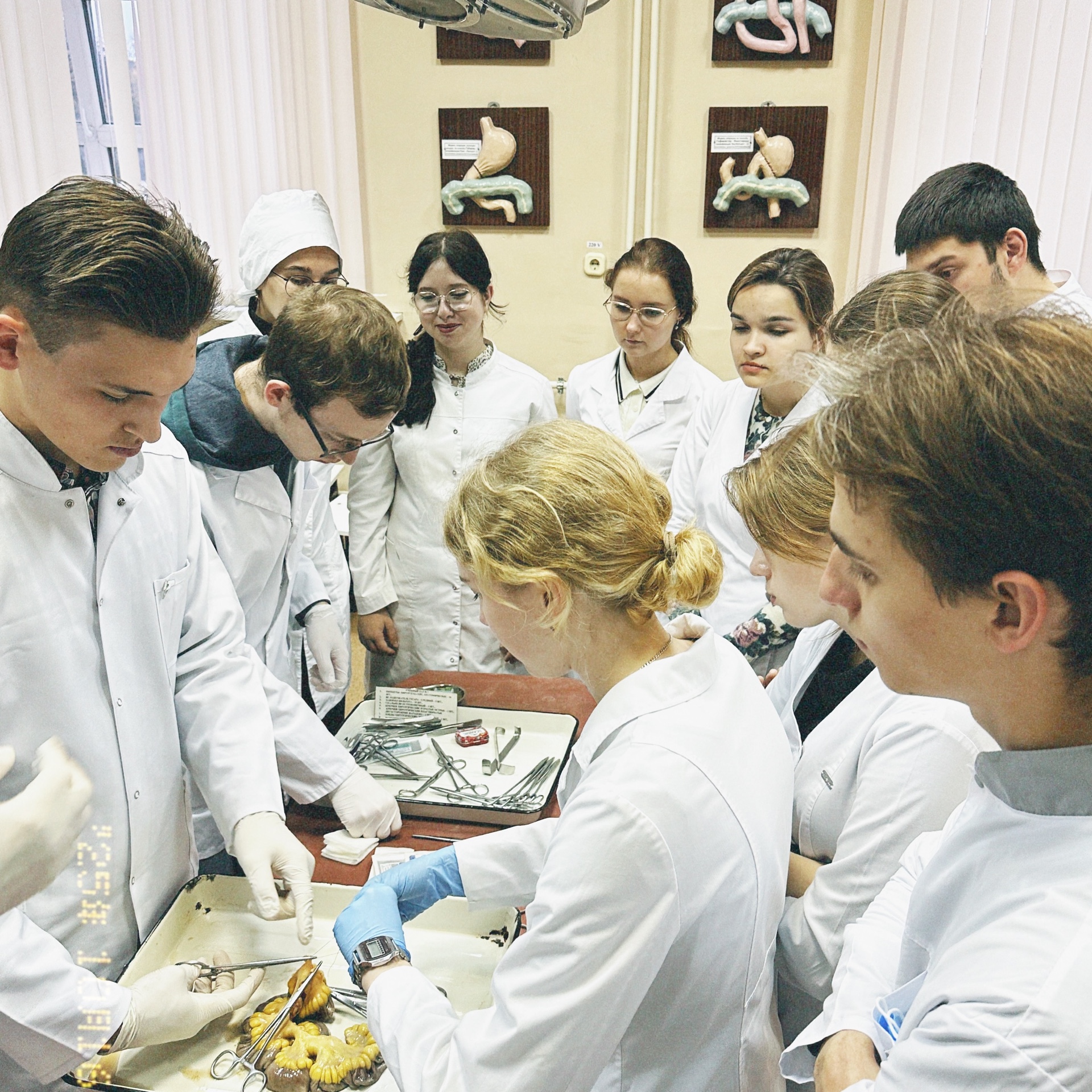
15 октября на кафедре ОХиТА состоялось практическое заседание «Резекция кишки». Выражаем искреннюю благодарность всем присутствующим!
Резекция тонкой кишки – это удаление части кишки с последующим восстановлением непрерывности ЖКТ или созданием энтеростомы.
Оперативные доступы: разрез делают поверх того места, в котором подозревают повреждение. Если не известно расположение очага, часто используют нижний срединный разрез (лапаротомию) или правый ректальный разрез (т.к. часто поражается подвздошная кишка).
Основные этапы операции:
1. Мобилизация резецируемого участка – перевязка сосудов и пересечение брыжейки удаляемого сегмента. В зависимости от способа мобилизации выделяют прямую и клиновидную резекции тонкой кишки.
а) линейная - перевязывают лишь прямые сосуды (удаляют малый участок)
б) клиновидная - перевязывают сосуды по ходу разреза брыжейки (значительный участок).
2. Резекция кишки – наложение эластических и раздавливающих кишечных зажимов по линии предполагаемого разреза в косом направлении (для наложения энтероанастомоза «конец в конец») и рассечение органа между ними, удаляя больше тканей на свободном (противобрыжеечном) крае кишки. (В настоящее время для уменьшения травматизации кишки зажимы не применяются, а используются швы-держалки).
3. Формирование межкишечного анастомоза, пальпаторная проверка анастомоза на проходимость, ушивание окна в брыжейке кишки.
On October 15, the Department of Operative Surgery and Topographic Anatomy held a practical meeting on "Bowel Resection." We sincerely thank everyone who attended!
Resection of the small intestine is the removal of a part of the intestine with subsequent restoration of gastrointestinal tract continuity or the creation of an enterostomy.
Surgical Approaches: The incision is made over the area where damage is suspected. If the location of the lesion is unknown, a lower midline incision (laparotomy) or a right rectus incision is often used (as the ileum is frequently affected).
Main Stages of the Operation:
1. Mobilization of the segment to be resected – ligation of blood vessels and transection of the mesentery of the segment to be removed. Depending on the mobilization technique, direct and wedge resections of the small intestine are distinguished.
a) Linear – only the straight vessels are ligated (a small section is removed).
b) Wedge-shaped – the vessels are ligated along the line of the mesenteric incision (a significant section is removed).
2. Bowel Resection – Application of elastic and crushing intestinal clamps along the line of the intended incision in an oblique direction (for an end-to-end enteroanastomosis) and dissection of the organ between them, removing more tissue from the free (anti-mesenteric) edge of the intestine. (Currently, to reduce trauma to the intestine, clamps are not used, and traction sutures are employed instead).
3. Formation of an intestinal anastomosis, palpatory check of the anastomosis for patency, and suturing of the mesenteric defect.
- Все новости20280
- Поступающим407
- Образование3203
- Наука2872
- Общество3062
- Университетская жизнь5055
- Медицина1229
- Трудоустройство501
- Непрерывное образование77
- Международная деятельность385
Информационные рубрики
Главный корпус
+7(4712)588-137
305041 К.Маркса,3, г.Курск
kurskmed@mail.ru
Приемная комиссия
58-81-38
305041 К.Маркса,3, г.Курск





